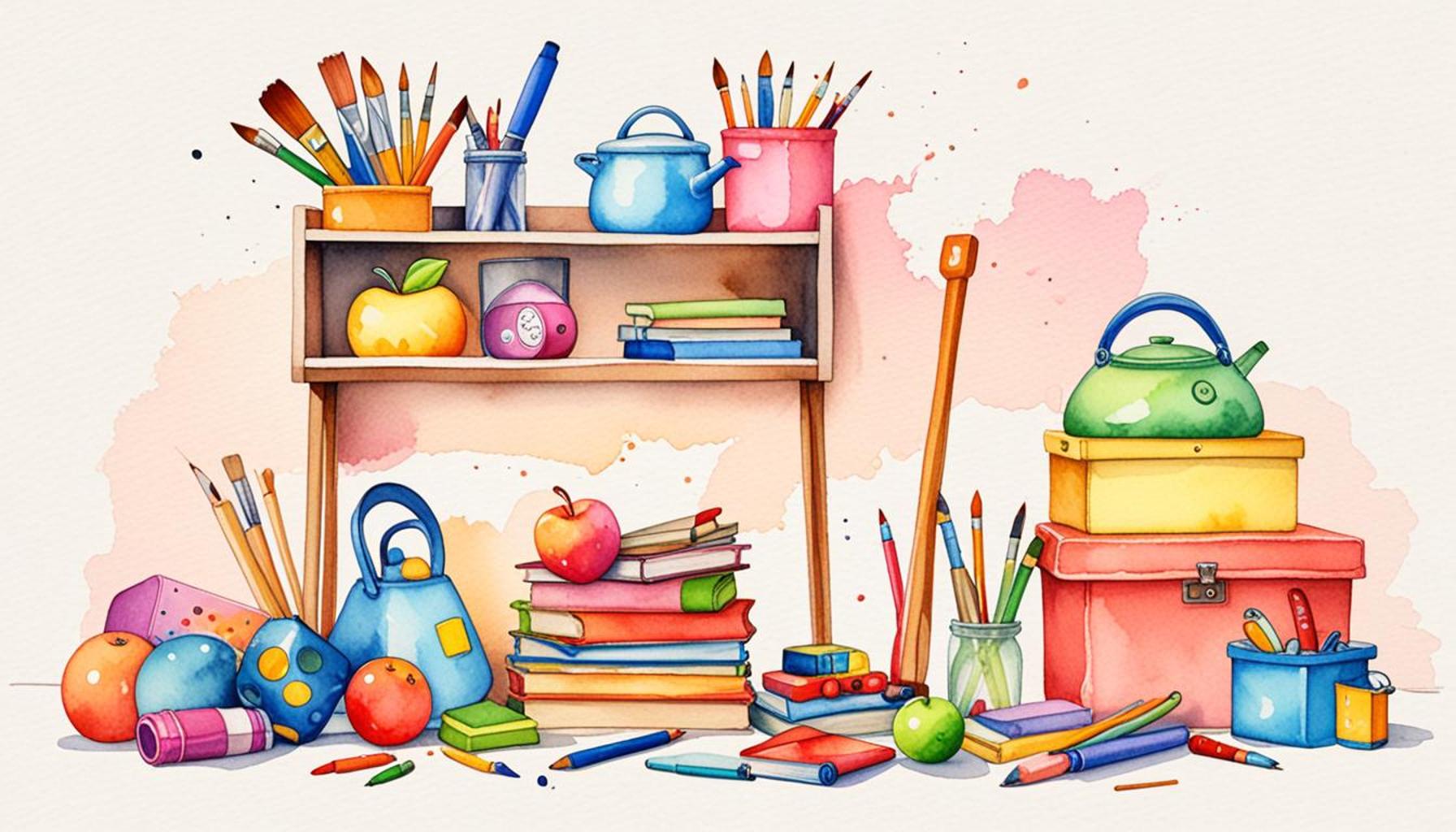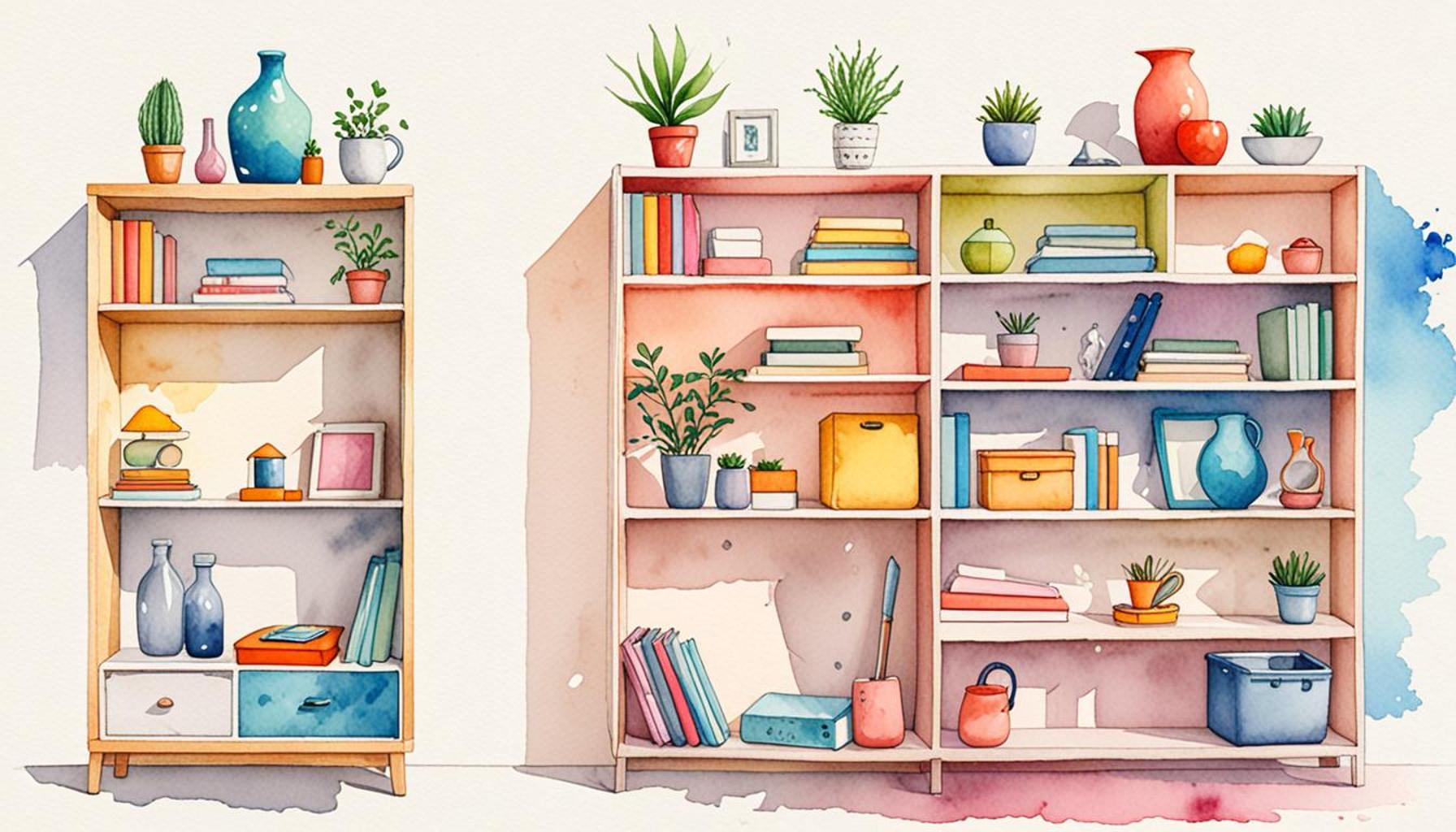Decluttering Techniques for Children: Teaching Organization from an Early Age

Raising Organized Kids
In today’s fast-paced world, teaching children organization has transcended mere cleanliness; it stands as a crucial life skill. With countless toys, school supplies, and digital distractions competing for their attention, kids can easily become overwhelmed. Implementing effective decluttering techniques can help children cultivate lifelong habits that will serve them well in both personal and academic spheres.
Why Decluttering Matters
The act of decluttering goes beyond simple aesthetics; it profoundly impacts a child’s emotional and mental well-being. Understanding why decluttering matters can spur parents into action. Here are a few compelling benefits of teaching children to declutter:
- Reduces Stress: A clean and organized space promotes a sense of calmness, which can be particularly beneficial in reducing anxiety levels. Numerous studies suggest that environmental clutter can lead to increased cortisol levels—the body’s stress hormone—making organization key to emotional health.
- Encourages Responsibility: When kids learn to care for their belongings, they develop a sense of ownership. Regularly engaging in decluttering enables them to appreciate their items and understand the importance of taking care of them, a principle that extends to various facets of life.
- Boosts Focus: An organized environment enhances concentration and memory retention. Research indicates that children in tidy spaces are more likely to be attentive and effective in their learning. Clear spaces can lead to clearer minds.
Simple Techniques to Teach
Introducing simple decluttering techniques early on sets the stage for lifelong organizational skills. Here are some engaging methods that can be easily integrated into your child’s routine:
- Sorting Games: Transform decluttering into a fun and interactive activity. Use colorful bins or boxes and encourage your child to sort toys, books, and other items by color, size, or type. This not only educates them about categorization but also makes it a playful experience.
- 30-Minute Challenges: Set timed sessions to tackle small tasks. For instance, challenge your child to clean up their room in 30 minutes. This instills a sense of urgency while making decluttering a dynamic and rewarding endeavor. You might be surprised at how much can be accomplished in just half an hour!
- Success Rewards: Motivate kids with small incentives after completing decluttering tasks. Rewards might include choosing a family movie for the night or a small treat. Positive reinforcement can greatly enhance their willingness to accept and embrace organizational tasks.
Join us as we explore practical strategies to help children embrace organization and declutter their spaces, paving the way for a more focused and stress-free childhood. With these skills, children will not only thrive academically but also develop a greater sense of self-discipline and emotional resilience that will benefit them for years to come.
DIVE DEEPER: Click here to learn about the impact of minimalist design
Engaging Children in the Decluttering Process
To effectively teach children the importance of decluttering and organization, it is essential to make the process interactive and enjoyable. Children are naturally curious and tend to engage better when tasks are presented as games or challenges. Here are some innovative strategies to get children involved without overwhelming them:
- Interactive Decluttering Sessions: Create a family ritual where decluttering becomes a regular part of your schedule. Whether it’s on weekends or designated early evenings, turning this into a family event fosters teamwork and camaraderie. Playing music during the process can create a cheerful atmosphere, making the task feel less like a chore and more like a fun gathering.
- Visual Aids: Incorporating visuals can greatly enhance a child’s understanding of organization. Use charts or stickers to track progress in decluttering tasks. For instance, a colorful poster featuring each room in the house can help kids visualize which areas need attention and motivate them to reach their goals.
- Modeling Behavior: Children learn by example, so it’s vital for parents and caregivers to model organized behaviors. Engage in decluttering alongside children to demonstrate techniques such as sorting, discarding, and organizing. This hands-on approach communicates the importance of these skills and reinforces lessons through real-time practice.
Age-Appropriate Techniques
Different age groups require tailored decluttering approaches. Here’s a breakdown of age-specific techniques that will resonate with children at various developmental stages:
- Toddlers (2-4 years): For the youngest children, focus on simple concepts. Use large containers that are easy for them to grasp and encourage them to place toys in designated bins. Singing songs related to cleaning can make it a cheerful experience.
- Preschool and Early Elementary (5-7 years): At this stage, children can start understanding categories. Introduce sorting activities where they can group items based on type or color. Provide them with choices—allowing them to decide where certain toys belong makes it more engaging and instills a sense of autonomy.
- Older Elementary (8-12 years): Children in this age group can handle more complex decluttering tasks. Encourage them to take inventory of their belongings, teaching them how to let go of items they no longer use. Involve them in the decision-making process regarding donations or giveaways, fostering empathy and responsibility.
By employing these engaging techniques and adapting them to your child’s age, you can cultivate strong organizational habits from an early age. As children learn the vital skill of decluttering, they not only gain a sense of order but also develop emotional intelligence that will support their growth and well-being throughout life.
| Decluttering Techniques | Impact on Children |
|---|---|
| Organizing Play Spaces | Promotes creativity and efficient playtime by making toys easily accessible. |
| Regular Decluttering Sessions | Encourages children to evaluate their belongings, fostering critical thinking and decision-making skills. |
| Sorting Systems | Teaches categorization, enhancing organizational skills that will be beneficial throughout schooling. |
| Visual Aids | Supports the learning process with color-coded bins, increasing engagement and interest in tidiness. |
Incorporating these decluttering techniques into daily life not only minimizes visual chaos but also significantly transforms how children interact with their environment. With each method, kids develop a stronger sense of responsibility for their belongings, which naturally builds their organization skills from an early age. Moreover, understanding the importance of maintaining a tidy space can lead to improved focus in school and social settings. To further immerse children in this practice, parents should lead by example, demonstrating how a simple act of decluttering can also bring joy and tranquility to life.
DISCOVER MORE: Click here to delve deeper
Fostering a Mindset of Minimalism
Teaching children to declutter is not solely about organizing their physical space; it’s also about cultivating a mindset that values simplicity and intentionality. Helping children understand the benefit of owning fewer items can foster a sense of contentment and responsibility. Here are some methods to encourage a minimalist mindset:
- The “One In, One Out” Rule: Introduce this guideline to help children appreciate the value of their possessions. For every new item they wish to acquire, encourage them to donate or discard an existing one. This approach helps reinforce the concept that our belongings should serve a purpose in our lives and encourages consideration before acquiring new items.
- Encouraging Experiences Over Things: Shift the focus from acquiring material goods to cherishing experiences. Organize outings for your child, such as trips to local parks, museums, or community events. Through this strategy, children will begin to realize that happiness and fulfillment often come from experiences rather than accumulation, setting a precedent for valuing memories over clutter.
- Storytelling and Role-Playing: Incorporate storytelling to illustrate the benefits of minimalism. Use characters who achieve joy or success through a less cluttered life. Role-playing activities can also allow children to practice decision-making when it comes to decluttering, helping them internalize the lessons through play.
Creative Decluttering Projects
Transforming decluttering into fun, creative projects not only keeps children engaged but also allows them to express themselves. Here are some project ideas that combine organization with creativity:
- DIY Organization Systems: Encourage children to create their own storage solutions. With simple materials like cardboard boxes, jars, or fabric, children can personalize their organization systems to make them visually appealing and functional. This not only sparks creativity but makes them proud of their efforts.
- Art Projects with Recycled Items: Promote a decluttering mindset alongside environmental consciousness by encouraging art projects that utilize unused or discarded items. Kids can create sculptures, collages, or functional art pieces from old toys or household items, demonstrating the concept of resourcefulness.
- Donation Drives: Organize a donation campaign to teach children about community service and empathy. Encourage children to select items they no longer need or use, and then participate together in a donation drive. This experience can help them understand the importance of giving back and the positive impact they can have on others.
The Long-Term Benefits of Decluttering
Instilling good decluttering habits early on has far-reaching benefits for children’s mental health and academic success. Research indicates that children who maintain orderly spaces are less likely to feel overwhelmed and more equipped to focus on important tasks. Here are some of the long-term advantages:
- Improved Focus: A clutter-free environment helps children concentrate better, allowing them to do homework more effectively and leading to better educational outcomes. Studies show that organizing physical space can lead to a more organized mind.
- Reduced Stress and Anxiety: Teaching children how to manage and minimize clutter can lessen feelings of anxiety and stress. A well-organized space can create a sense of calm and predictability, helping children navigate their surroundings with confidence.
- Life Skills Development: By learning to declutter from an early age, children cultivate essential life skills such as decision-making, responsibility, and time management. These foundational skills will serve them throughout their lives, making transitions to adulthood smoother.
By implementing these tactics, parents can succeed in teaching children effective decluttering techniques while nurturing strong organizational muscles—a gift that will serve them well into their adult lives. With each effort, children become equipped to tackle the messiness of life with confidence and clarity.
DISCOVER MORE: Click here to enhance your minimalist living
Conclusion
In conclusion, teaching children the art of decluttering is a valuable investment in their present and future well-being. As we’ve discussed, instilling effective decluttering techniques from an early age promotes not just a tidy living space, but also a mindset rooted in awareness, appreciation, and responsibility. By introducing children to the principles of minimalism, emphasizing the importance of experiences over possessions, and engaging them in fun, creative organization projects, we pave the way for their success in managing space and clutter throughout their lives.
The benefits of a clutter-free environment extend far beyond mere aesthetics; children learn crucial life skills such as decision-making, prioritization, and empathy through participation in activities like donation drives and collaborative organization efforts. These experiences not only enhance their ability to focus and manage stress but also contribute positively to their emotional health and academic performance.
As parents and educators, we have the responsibility to guide children in understanding the significance of their belongings and the joy of living a simplified lifestyle. Encouraging a culture of decluttering helps them develop a relationship with their material possessions that fosters gratitude rather than a sense of entitlement. Moving forward, let us embrace these techniques to cultivate a generation that values orderliness and intentional living, equipping them with the skills to navigate life’s challenges. In doing so, we are not just organizing their rooms but also shaping resilient individuals ready to face the world with clarity and confidence.



